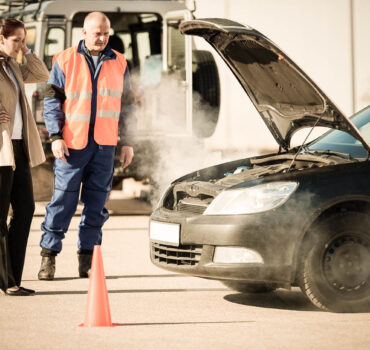How Much Will I Get for Pain and Suffering from a Car Accident?

When people suffer injuries in car accidents, they can recover damages for pain and suffering over and above the costs of their medical bills and lost wages. They can learn how to maximize their recovery for pain and suffering by consulting a car accident lawyer.

Table of Contents
What Is a Pain and Suffering Award?
When people are involved in a car accident caused by another driver, they might be entitled to recover damages. They can recover both economic and non-economic damages. Economic damages might include medical bills, lost wages, and repairs to vehicles.
Non-economic damages typically consist of pain and suffering and other somewhat subjective factors. They can include pain and suffering, physical impairment, disfigurement, insomnia, depression, anxiety, vehophobia, the inability to engage in non-economic activities (such as hobbies or sex), and general loss of enjoyment of life.
The monetary value of these non-physical injuries can be subjective and depend on the facts of each case. Nevada law does not require a victim to suffer a physical injury to recover pain and suffering damages. However, victims are more likely to recover non-economic damages if they have measurable physical injuries.
Injuries that Get Victims Money for Pain and Suffering
An accident victim can potentially recover pain and suffering damages for any injury sustained during a car accident. However, some injuries are more likely to result in pain and suffering awards than others. Common injuries to the body after a car accident include:
Soft Tissue Injuries
Soft tissue is anything in the body that is not hard bone, including muscles, skin, tendons, and internal organs, among other things. Harm to any of these parts of the body constitutes a “soft tissue injury.” The most common soft tissue injuries are:
Strains. Strains are injuries affecting muscles and tendons. They occur when the soft tissues have been overused, stretched, or struck at high speed.
Sprains. Sprains are injuries impacting the ligaments that occur when the force of a collision twists or stretches them in an unnatural direction.
Whiplash. Whiplash is an umbrella term for injuries that impact the structures in the neck. The rapid motion of a car crash can force the neck and head to whip forward and backward, tearing muscles, tendons, and ligaments.
Contusions. Contusions (bruises) are injuries resulting from blunt force trauma that breaks the blood vessels in soft tissue.
Although soft tissue injuries can be painful and need medical treatment, they often do not result in large awards for pain and suffering. They are hard to prove and are less likely to lead to long recovery times than more severe injuries.
Broken Bones
Injuries leading to broken bones frequently result in larger pain and suffering awards soft tissue injuries. Broken bones are much easier to prove. Also, most people understand the pain and recovery time involved with broken bones. More severe breaks typically result in higher awards. For example, a hairline fracture, or a very small crack in a bone, will likely result in less compensation than a compound fracture.
Hospital Stays
Any injury that requires a hospital stay increases the possibility of winning an award for pain and suffering. Hospital stays do not necessarily guarantee an award for non-economic damages. However, most people associate a hospital stay with severe injuries, long recovery times, distress, and pain. Further, when victims are in the hospital for an extended period, they will have extensive medical records of their pain and distress. In general, when accident victims’ injuries require a hospital stay, their award for pain and suffering is larger than for victims that do not require hospitalization.
Surgeries
Injuries requiring surgeries almost always lead to pain and suffering awards larger than other cases. Surgeries require longer hospital stays, more recovery time, and more disruption to the victims’ life. They offer the clearest, most incontrovertible evidence of pain and inconvenience. The value of the pain and suffering award will vary based on the surgery.
Accident victims may also recover pain and suffering awards if their injuries lead to scars, disfigurement, or loss of physical function. A wide variety of injuries can lead to non-economic awards in car accident cases. A car accident lawyer can help accident victims maximize their pain and suffering award.
Evidence to Prove Pain and Suffering
Even when injured, accident victims have to provide evidence of their non-economic injuries to receive a pain and suffering award. Proving pain and suffering requires extensive documentation and as much objective or neutral evidence as possible to show what the accident victims experienced. Examples of evidence that victims can use to establish pain and suffering damages include:
- Expert testimony by a mental health expert about the victims’ state of mind
- A doctor’s written opinion and about the extent of the victims’ pain
- Records of the pain medication prescribed to the victim
- Any medical imaging showing broken bones, soft tissue injuries, or other physical signs of harm
- Testimony from friends and family about the victims’ pain and suffering and how the injuries disrupted their life
- A daily journal where victims record their pain and symptoms
Medical records and bills are the best evidence accident victims can provide to prove their pain and suffering. The records will include images of and extensive notes about the victims’ injuries. Also, at every medical visit, the doctor asks victims about their pain level and adds it to the medical records, providing ongoing documentation of the pain.
If victims have physically apparent injuries, they may want to take pictures soon after the accident. A combination of strong evidence and a competent lawyer gives victims the best chance of recovering non-economic damages. After seeking medical care, victims should consider how to find the best injury lawyer to help them with their Nevada car accident claim.
How Economic Damages Play a Role in Settlements for Pain and Suffering
Nevada law does not necessarily tie the size of pain and suffering awards to economic damages. However, many insurance adjusters use them as a starting point for calculating what to offer for the non-economic damages portion of a settlement. At the most basic level, larger economic damages in a car accident usually lead to a larger award for pain and suffering. The methods for calculating the value of a pain and suffering claim are often mysterious and inaccurate. However, many insurance adjusters and lawyers use the multiplier method or the per diem method to estimate a pain and suffering award.
In the multiplier method, victims multiply their economic damages by a number between one and five. The number increases as the severity of the victims’ injuries increases. For example, someone with economic damages of $50,000 and a multiplier of four, will have a pain and suffering award of $200,000. In the per diem method, an attorney or adjuster assigns a specific dollar amount to each day between the accident and when the client made, or is expected to make, a full recovery. Longer recoveries lead to larger awards for pain and suffering.
All methods used to calculate the value of pain and suffering merely provide rough estimates. The actual value of victims’ pain and suffering may be much higher or lower. However, generally, pain and suffering awards are larger in cases with more economic damages.
What Can Hurt Pain and Suffering Claims?
Victims often make accident claim mistakes that decrease the value of their claim. Some of the most common mistakes are failing to call the police and get a report, waiting too long to get medical attention, not following doctors’ orders, accepting the first settlement offer, and trying to settle the claim without a lawyer.
Car accident victims can avoid making costly mistakes by consulting a personal injury lawyer soon after the accident. Although large pain and suffering awards are rare, victims should protect their interests.



